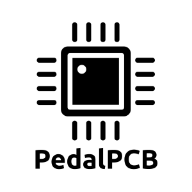Yeah, if it sounds great, it is great.
Keep experimenting!
Since you've got it breadboarded, start moving things around, deleting things — see what sounds better to you.
Move the buffer right to the front of the Muff, then try removing the first transistor stage of the Muff so it's
Op-amp buffer > Muff clipping stage 1 > Muff clipping stage 2 > BMT tone-stack > [try op-amp buffer w/ no Muff recovery, and with recovery or even swap the 2nd op-amp stage as power-buffer and skip the final op-amp buffer altogether]
I suggest having a look at Mictester's 21st Century Muff (schematic). You should be able to find it online easily.
It's not exactly what you want, with a James tone-stack, but that's kind of the point — to show you there are many before you who've tweaked the Muff in one way or another and you could easily exchange the James for a BMT ...
So now that I've got my Dimetrodon Distortion dialed in pretty much where I want it, I'm looking at the next Steggo semi-original design. I want to do a Big Muff with a 3 band EQ in place of the tone stack, and of course mess with the clipping stages (I think I want to stick with two for the...

forum.pedalpcb.com
Simple 3-Band EQ schematic?
www.diystompboxes.com
Adding a 3 band EQ to a Muff?
www.diystompboxes.com
Personally, I'd experiment with :
- having the first 3 stages of the Muff,
- ditch the Muff's tone & recovery stage, replace with a twin op-amp BMT such as the COLD TURKEY EQ.
The Cold Turkey is a BMT that only uses one TL072 compared to the Box And All's 2 x TL072. Wouldn't be hard to swap that into your breadboard to compare with what you have.
Once you compare, then you can decide which one to build up.
Here's another option, go modular:
Build a PPCB Muffin Man (basic Muff), but don't populate the tone-stack & recovery
Build the Box & All
Build the Cold Turkey
Box it all up with the Muff feeding a foot-switch that goes to either EQ and you've got a cool dual-channel Muff with separate EQs.
Next up, go even more modular.
Look at the Muffin Crumbs, get 4 so you can build each stage of the Muff separately,
1 INPUT
2 CLIP 1
3 CLIP 2
4 RECOVERY
then as before build each EQ on its own board,
now mix and match all the boards:
Clip 1 > Clip 2 > Box EQ
or
Cold Turkey EQ > Muff Clip 1 >
Muff Tone > Muff Recovery
or
Muff input > Muff Clip1 > EQ > Muff Clip 2 > Recovery (or just OUT)
or
???
You can hook all that up to each other via the breadboard and have set pieces so you're not constantly ripping apart and rebuilding an entire breadboard set up, just swapping in/out modules...


